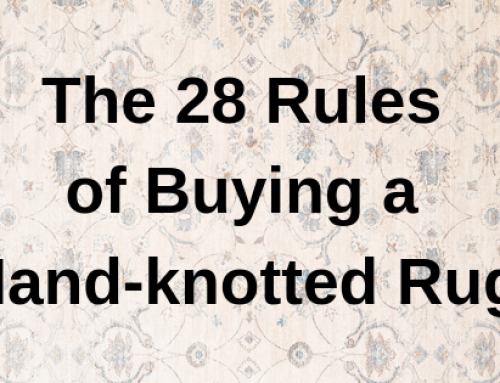To understand hand knotted area rugs, you need to understand the difference between what is meant as “Oriental rugs” and “Persian rugs”. Many of our customers at Rugman ask us this question. These are the customers we love to discuss anything that has to do with rugs; such as knot counts and motifs. So the simple answer is that Persian rugs are Oriental rugs. Oriental rugs simply refer to rugs made in oriental countries. Persian rugs are made in Iran and Iran is an oriental country. But not all oriental rugs are Persian rugs. Because Persian rugs are traditionally the famous type of hand-knotted rugs, they have their own distinction. Where rugs from other oriental countries are typically grouped together and are referred to as Oriental rugs.
Many people use the terms “Persian carpet” and “Oriental carpet” interchangeably, and as we said they are not exactly the same thing. The difference between Persian and Oriental Rugs is quite vast. Both Persian and Oriental rugs are beautiful and unique in their own way. Here are some of those distinctions.
Place of Origin
A rug that originates from central Asia, a region once known as The Orient, is an Oriental rug. This region comprises:
- China
- Afghanistan
- Nepal
- Pakistan
- Russia
- Iran
- India.
Hence, a rug made in any of these countries is an oriental rug. The Persian rug dates many centuries back in the Persian Empire. While it can be proven that the borders of the Persian Empire changed from time to time. Persian area rugs refer to the present day country of Iran.
Design
One key distinction between Persian rugs and other Oriental rugs is the design. A conventional Persian carpet can include any four primary patterns: all-over, compartment, central medallion and one-sided. Most styles feature symmetrical design or at least designs that appear symmetrical. Persian rugs usually make use of warm-toned colors. Their wool is dyed deep indigo, rust stones, ivory, red, Golden yellow and sage. Oriental rugs incorporate the same patterns as Persian rugs, usually with a twist. They often contain flora and fauna motifs, using a more curved line quality than is typically seen in Persian rugs. They also include landscape designs with mountains, fields, lakes, and trees. Many Oriental rugs are also sculpted with contrasting colors that add texture to the designs in the weave. Flowers, trees, and clouds may be raised from the field to create a three-dimensional effect.
Knots
Another significant difference between Persian and oriental rugs is the type of knots used to create the rug. Oriental rugs are of utmost quality, with smaller hand-tied knots and a denser pile than other rugs. Authentic Oriental and Persian rugs are knotted by hand on looms. Persian rugs are noted for their supreme craftsmanship and quality, with up to 160 hand knots per square inch. Symmetrical Ghiordes knot is used to tie the Oriental rugs. The Ghiordes knot is found in rugs that are hand knotted in the Kurdish areas and Turkey. Persian rugs are typically knotted using a Senneh knot that is asymmetrical. Countries that have spent the last millenniums trying these types of knots include Pakistan, China, India, Egypt, and Iran.
What is the distinction between Persian and Oriental rugs?
It is sometimes hard to distinguish the difference between Persian and Oriental rugs. Their natural wool fibers, ancient and intricate designs, great artistry and durability make them very popular rugs. Over time, both types of rugs increase in value. Besides, both types of rugs have been handcrafted. This makes them a treasure that can bring happiness and elegance to your home for many years to come. At Rugman we provide a 30-day no-questions-asked returns.


